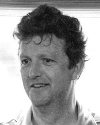Microseismic survey of a North Sea reservoir
Microseismic survey of a North Sea reservoirProduction activities generate microearthquakes. When plotted, these events form clusters that can delineate reservoir structures. Microseismic monitoring provides real-time definitionsB. C. Dyer, R. H. Jones and J. F. Cowles, CSM Associates; O. Barkved and P. G. Folstad, Amoco Norway
This article concerns a recent North Sea survey in Amoco Norway's Valhall field. The survey follows a successful, 20-day, microseismic-monitoring trial in Phillips Norway's Ekofisk field, adjacent to Valhall. Microseismic monitoring was performed at Valhall for 57 days during June and July 1998. Discussed herein are the rationale, design, acquisition and results of the Valhall survey. Introduction Microseismic monitoring is an emerging technology within the hydrocarbon industry. It is being driven by operator requirements for real-time information on hydraulic and geomechanical processes taking place within the reservoir in the interwell region, remote from wellbores. The technique is based on the observation that oilfield production activities generate very small microearthquakes (microseismic events). Such events are non-randomly distributed and can be detected at distances of more than one km using appropriate sensors. When plotted, they form clusters that can delineate reservoir structures at high resolution, and provide other useful information to assist in reservoir development and management decisions. Experience in the U.S. and North Sea has confirmed that microseismic monitoring can:
Microseismic events can also be regarded as powerful compression and shear wave sources, located within the reservoir, that can be used for velocity imaging and shear-wave-anisotropy analysis. When integrated with other borehole and reflection seismic techniques, microseismic monitoring provides a powerful, routinely predictive tool that can significantly cut lifecycle costs of reservoir monitoring, thus leading to optimization of wells and prediction of pre-emptive interventions. In 1997-98, three companies committed to demonstrating the potential value of microseismic monitoring in specific field trials. Application areas for the three companies were broadly different, but all used modified, current-generation seismic tools. Field Background And Rationale Valhall field, which has been producing oil since 1982, currently produces in excess of 100,000 bopd. Estimated original oil in place is 2.4 billion bbl, of which 640 million bbl can be recovered under the current plan. Development drilling is still ongoing. The field is recognized as one of the most challenging in the North Sea. The reservoir is relatively thin, structurally complex and covers a 50-km2 area, Fig. 1. It was formed as a slightly asymmetric anticline by inversion along the major Skrubbe fault, which lies west of the field. While 3-D seismic data plays an essential role in assessing depletion of the structure's flanks, gas charging of the overburden has severely distorted the seismic image of the crestal part. The reservoir rock is weak, highly porous Cretaceous chalk, which undergoes significant compaction when depleted. Fracture permeability and compaction compensate for generally low, chalk-matrix permeability. Horizontal wells have significantly improved recovery. Although compaction of the chalk adds to oil recovery, it also results in overburden deformation. This implies seafloor subsidence (currently 3.5 m) and a negative impact on well life. Overburden deformation associated with compaction calls for special well and casing design, in both overburden and reservoir zones. Still, one or two wells per year are lost due to permanent failure or casing collapse. Most of the horizontal wells are completed by multiple-proppant fracturing, with up to five or six fracs in one well. Ability to monitor and qualify these stimulations is currently limited to using overall production data. Alternative observations, which could be used to delineate magnitude and direction of fractured zones, would be very valuable in optimizing wellbore stimulation. Information could be obtained on:
The need for this information coupled with recent success with microseismic monitoring in the Ekofisk field were key reasons for pursuing a microseismic survey at Valhall. Planning/Design Well 2/8-A3B was an ideal candidate for a microseismic survey; it became available in early summer 1998. In addition to its location in the crestal part of Valhall, it is only a few hundred meters away from Well 2/8-A6, which was being sidetracked during the monitoring period, with hydraulic fracturing of the reservoir planned when drilling ends. The only unfortunate limitation was a clay plug in the bottomhole section of 2/8-A3B, which caused the geophone array to be located 250 m shallower than planned and above the top reservoir. This increased seismic attenuation and significantly reduced the number of events detected. Before the survey, a model study was carried out using proprietary network-modeling software. The objectives were to test the methodology for microearthquake location at Valhall, investigate potential resolution of locations and check for blind zones in the survey region. The modeling software can be used to determine an ideal configuration for the sensor array, given operational constraints such as costs, well location and availability. This design optimization process helps ensure data quality through pre-survey modeling of location accuracy, detection sensitivity and spatial resolution of structure. In this case, there was only one well available and a six-level receiver string; therefore, optimization was confined to deployment depth. The P&S wave velocity and interval models used in the survey planning and design (Fig. 2 and Fig. 3) show a small selection of ray paths superimposed on the models. These illustrate the strong refractions and critical refractions which were expected. Data Acquisition The raw-trace data was acquired with modified, fixed-geophone packages to enhance resonant-free frequency response. Equipment used included a CGG-SST500, six-level, three-component, vertical-seismic-profiling (VSP) geophone string, and CSM Associates' microseismic acquisition/processing system. The tool was deployed in Well A3B between 2,000- to 2,100-m TVD. The acquisition and processing system was networked to a CGG VSProwess data-acquisition unit. This analyzed raw-seismic-trace data for microseismic events based on a pre-set trigger threshold on specified geophones. The trigger logic was designed to discriminate against borehole noise. Tool Orientation The three-component geophone groups at each level in the toolstring were oriented using hodogram analysis of a circular-airgun VSP shoot with a 1-km radius. The toolstring used has no internal mechanism for orienting the fixed-cartridge geophones. As the well at Valhall was vertical, only the two horizontal components needed to be oriented in each satellite. This allowed for relative rotation between satellites. The method of satellite orientation consists of finding the optimum angle of rotation that transforms the actual horizontal geophone components into components oriented along the east-west and north-south geographic axes. Ideally, this is done by plotting the azimuth given by the horizontal hodograms as a function of the azimuth of the gunboat. The situation for Valhall was more complex than ideal due to structural effects between the geophones and gunboat. However, the relationship between boat azimuth and lag between the satellites and gunboat was used to solve this problem. Without the circular VSP shoot, the range of geophone-orientation errors could have been up to 30° for a single, orientation-shot location. A perforation shot was fired in a Well A6 sidetrack and detected during the survey. Hodograms formed from P-wave arrivals pointed toward the known position of the perforation shot, confirming geophones were correctly oriented. Defining The 3-D Velocity Model Velocity information was available on Valhall from P- and S-wave sonic logs in the receiver well. However, the initial 3-D velocity model, derived from the velocity logs, provided a poor fit with observed microseismic data, so a layer-stripping approach was used to obtain a velocity model from the microseismic data. In this way, P- and S-wave velocity models (Fig. 2 and Fig. 3) were derived from microseismic data by minimizing data residuals between observed P- and S-wave traveltimes, hodogram dip and equivalent data predicted from network modeling. Accuracy and reliability of traveltime and directional data used to locate microseismic events were determined by statistical analyses. Using these error estimates and the 3-D model, locations were mapped and their accuracy found to be better than 15 m. Located Events Microseismic event rates ranged from 0-10 per day. During the 57-day monitoring period, 572 events were detected, of which 324 could be reliably located. The event rate was about 10% of that observed in Ekofisk field (Maxwell, et al., 1998, SPE/ISRM 47276). This appears to be due to high attenuation of the low-velocity sequence between geophones and reservoir, and the fact that the sensor string could not be deployed as close to the reservoir as it had in Ekofisk, where deeper geophones were in the reservoir sequence. This means that only nearby or more-energetic events were detected. Shallow events were detected and could be related directly to drilling activities in Well A6, suggesting that microseismic monitoring could be a useful means of detecting borehole stability and integrity problems. These shallow events were recorded June 8 during an 18-hr period. At that time, sidetracking in A6 was being initiated with drilling through the old casing. This is believed to be the cause of these events. The "collapsing method" (Jones & Stewart, 1997) was used to identify the simplest structures consistent with event locations. This method uses data uncertainties to calculate a confidence-ellipsoid volume that contains each event, Fig. 4. All events are allowed to move within the error ellipsoids in such a way as to find the simplest structures which are consistent with event location data and known uncertainties. Using this technique revealed that locations moved comparatively little, indicating that apparent structures in event locations were representative of the simplest structures consistent with all data. Interpretation All events, except those related to drilling activities, are located within a 50-m thick zone directly above the Top Balder reservoir formation, Fig. 5 and Fig. 6. Limited vertical and lateral distribution of events indicates that the microseismicity is related to reservoir production rather than random background seismicity. This is a major zone where wellbore stability problems are experienced. From event locations, two potential structures were interpreted: analysis of focal mechanisms of events in these lineaments indicated a significant normal-faulting component. Although the direction of the lineaments does not necessarily indicate fault strike, it is likely the case in Valhall. These lineaments indicated two sets of fault directions: one roughly NW to SE, the other roughly SW to NE. This agrees with the current fault-pattern model for Valhall. Conclusion This survey proves a high level of microseismic activity in the Valhall field that is most likely related to reservoir production. The observed microseismic activity agrees with general fault trends and occurs in a zone with significant wellbore stability and integrity problems. New tool developments, offering wider bandwidth, better sample rates and slimhole deployments, will enable microseismic monitoring for a wider range of completions. If noise levels are acceptable, it should be possible to deploy such tools through production tubing to the well bottom, thereby greatly increasing the applicability of the microseismic-monitoring technique. The next stage in development of the microseismic-monitoring technique is permanent downhole monitoring. A number of operators are now looking at this option. There are technical barriers to overcome, but the general movement toward permanent monitoring and control downhole is generating enabling technologies that could make permanent microseismic monitoring routine and cost-effective. This will enable seismic data to be acquired in real time over the life of the well. Acknowledgment The authors thank 1) The Vallhall Partnership (Amoco Norway, Enterprise Oil, Elf Aquitaine and Amerada Hess) for permitting its data to be presented in this article, and 2) CGG Borehole Services Division. The authors
Copyright © 1999 World
Oil |

 Dr.
Benjamin C. Dyer graduated from Southampton
University in 1984 with a degree in geophysical sciences before earning a PhD at Imperial
College, London, in seismic reflection and transmission tomography. He has worked for CSM
Associates Ltd. since 1992, where he has specialized in borehole seismic developments,
tomographic imaging, forward modeling and pre-stack depth migration.
Dr.
Benjamin C. Dyer graduated from Southampton
University in 1984 with a degree in geophysical sciences before earning a PhD at Imperial
College, London, in seismic reflection and transmission tomography. He has worked for CSM
Associates Ltd. since 1992, where he has specialized in borehole seismic developments,
tomographic imaging, forward modeling and pre-stack depth migration. John
F. Cowles is business development manager for CSM
Associates Ltd. and has 14 years experience in marketing and business development, including
six years' experience in the oil/gas industry. His primary role is to help transfer
microseismic-monitoring expertise and experience gained from geothermal/radwaste
applications to the industry. He graduated from Manchester University in 1982 and took his
masters degree in 1991 at Bristol Polytechnic.
John
F. Cowles is business development manager for CSM
Associates Ltd. and has 14 years experience in marketing and business development, including
six years' experience in the oil/gas industry. His primary role is to help transfer
microseismic-monitoring expertise and experience gained from geothermal/radwaste
applications to the industry. He graduated from Manchester University in 1982 and took his
masters degree in 1991 at Bristol Polytechnic. Dr.
Robert H. Jones, CSM Associates' chief
geophysicist, graduated from Manchester University with a BSc (hons) in physics in 1981. He
earned his masters degree in applied geophysics at Birmingham University in 1982 and a PhD
in geophysics at Cambridge University. He has been with CSM Associates for 11 years,
specializing in development of microseismic location algorithms, processing and
interpretation.
Dr.
Robert H. Jones, CSM Associates' chief
geophysicist, graduated from Manchester University with a BSc (hons) in physics in 1981. He
earned his masters degree in applied geophysics at Birmingham University in 1982 and a PhD
in geophysics at Cambridge University. He has been with CSM Associates for 11 years,
specializing in development of microseismic location algorithms, processing and
interpretation. Olav
Inge Barkved has been with Amoco Norway since
1992. He earned a MSc in petroleum exploration from the University of Trondheim in 1983. He
joined Geco-Prakla upon graduation. Since then, he has held various R&D positions with
Geco/Schlumberger, working primarily in the area of seismic reservoir characterization. His
current role is lead geophysicist, with primary responsibility for Valhall field
development.
Olav
Inge Barkved has been with Amoco Norway since
1992. He earned a MSc in petroleum exploration from the University of Trondheim in 1983. He
joined Geco-Prakla upon graduation. Since then, he has held various R&D positions with
Geco/Schlumberger, working primarily in the area of seismic reservoir characterization. His
current role is lead geophysicist, with primary responsibility for Valhall field
development. Per
Gunnar Folstad earned a MSc in applied physics from
the University of Trondheim, Norway, in 1983. He began his professional career with
Geco/Schlumberger, carrying out seismic processing research. For the last five years, he has
been with Amoco at the Norway office, currently as senior staff geophysicist. He is in
charge of geophysical evaluation of the Hod area and provides special seismic technology
support.
Per
Gunnar Folstad earned a MSc in applied physics from
the University of Trondheim, Norway, in 1983. He began his professional career with
Geco/Schlumberger, carrying out seismic processing research. For the last five years, he has
been with Amoco at the Norway office, currently as senior staff geophysicist. He is in
charge of geophysical evaluation of the Hod area and provides special seismic technology
support.
